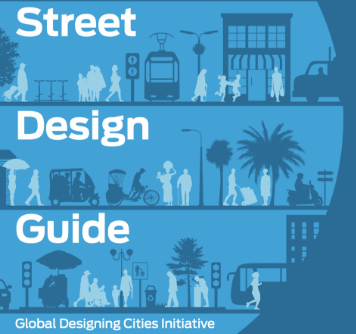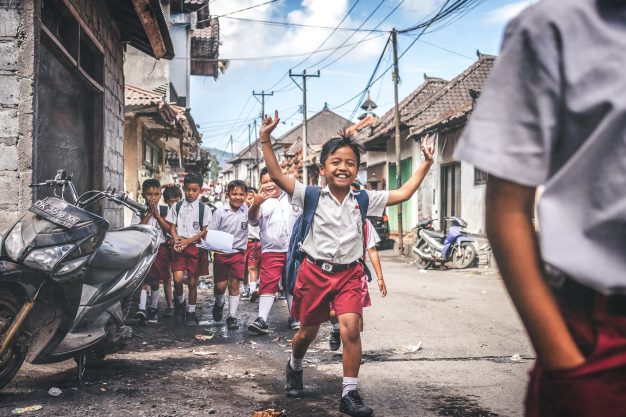
Meet Ankita Chachra – keynote speaker at CiTC World Conference 2018
It is with great pleasure that we will welcome Ankita Chachra as our third keynote speaker to this month’s Child and the City World Conference 2018. An acclaimed urban designer, few are better placed than Ankita to offer such a unique and inspiring perspective of design guidance that is child-focused.
She works with the Global Designing Cities Initiative, and her work in applying strategies and tools from the Global Street Design Guide, a worldwide standard for the redesigning of streets and public spaces, is well-documented. But from where does she draw her inspiration? Ahead of the conference, Ankita spoke to CiTC to share her ethos.
CiTC: As an urban designer, how you would you define your role?
AC: “Contrary to the commonly used definition of an urban designer’s role – i.e. ‘someone that designs and shapes the physical environment in cities’ – as an urban designer one functions between blurred boundaries of politics, public realm, architecture, landscape, environment, social infrastructure, public health, community engagement and multiple other fields that shape a city. It is essential for an urban designer to understand, question, re-think and design the ‘system’ that allows cities to be healthy, equitable and prosperous.

Accessible and vibrant
“In my present role, I work with cities to shape their streets such that they support active, safe, and sustainable modes of transportation while being accessible and vibrant. A public health grant by Bloomberg Philanthropies currently funds this work, and my role lies between the crossroads of the public realm, street design, transportation, public health, community engagement, and social justice.”
How and why is the process of designing a city about more than just bricks and mortar?
“Bricks and mortar provide the shell for a city, but it’s people that make the city. A city is more than just its physical environment; it is a representation of its politics, public places, social infrastructure, culture, and multiple urban systems. Designing a city requires thinking of various scales that effect how people experience the city, for example, when considering a city’s streets, an urban designer needs to be able to comprehend the detail of sidewalk widths, kerb and accessibility ramps, and at the same time be able to acknowledge large-scale networks that connect the sidewalks and provide people access.
“Policies and programmes also play a crucial role in the way we build our cities, and yet, at the same instance, the built environment often inform the way policies and programs get implemented. Cities reflect complexities and connections which go beyond just brick and mortar.”
Decision-making process
How far away are we from a scenario where national and local governments automatically put children’s needs at the heart of the urban decision-making process, and are not just a ‘bolted-on’ afterthought?
“Globally, I think we still have a long way to go. Around 500 children are dying every day due to road traffic violence, over 41 million children under the age of five are estimated to be overweight due to lack of physical activity and access to nutrition, and some 235 million people are suffering from asthma, of which young children make up a significant percentage. A lot of the risk factors for these challenges can be addressed at the city planning and design level, but we continue to ignore this urgent call for change.
“On the bright side, we have cities like Bogota, Tirana, London, Toronto and a few others that are prioritising the needs of children and the elderly in their decision-making, by implementing programs and policies that focus on their needs. They are willing to re-work their mobility choices, housing policies, public spaces, and other services in ways that are successful in attracting parents, young families and children.
Youngest residents
“National and local governments need to keep in mind that it not just about providing a swing or a playground but systematically rethinking how cities can provide safe, accessible, and inspirational services and amenities to its youngest residents.”
Ask a young person what they want a city to be and they may well come up with something truly leftfield. So, how important is flexibility in the design process and what is the true value in letting young people tell us about what they need to be able to live safely and securely?
“Is leftfield a bad thing? Maybe we do need a bit of out-of-the-box/ crazy ideas to fix our cities! I think every idea is worth investigating; it can either lead designers to a solution or point them towards the issue. As a designer, our role is to facilitate discussions that help us learn about the needs of the users and use that knowledge to provide design solutions and choices for them. A process-driven design allows more flexibility, which in turn leads to more innovative and informed projects.”

Visual tools
How do we best engage – be it face to face or online – with them and their communities?
“For many years now, designers/planners/practitioners have distanced and separated themselves from the users. Use of words like ‘them’ versus ‘us’ dictate the discussions. However, the real value lies in understanding that ‘we’ are all on the same team. Users, in this case, young people, know what they need. The end goal of the engagement process should be to achieve a design that serves their interest by providing them with options to choose from.
“Designers should never undermine the power of meaningfully engaging with young people face to face and creating visual tools that allow communities to see and imagine what’s possible in their built environment.”
You’ve been involved in urban planning projects across the world. Can you share any examples of where different cultural, political and societal nuances influence urban planning? And what are the critical questions that ALL city policymakers and planners – whatever country it may be – need to ask when mapping out child-friendly cities?
“Socio-cultural, political and social nuances strongly influence the public realm. In many contexts, even daily activities like commuting to school, running errands, or otherwise traveling around a city are often unpleasant and stressful, with children and their caretakers exposed to speeding traffic, hazardous obstacles on sidewalks that force them to walk on the road, and unhealthy vehicle pollution, all negatively impacting their physical and mental wellbeing.
Huge potential
“Streets are the most extensive network of public space in cities and can make up to 30 per cent of the city’s total area. This valuable real estate offers a huge potential to transform our cities and consider the needs of children and their caregivers.
“When designing cities for children, we must begin by including safety and accessibility as the absolute minimum standard, followed by comfort and enjoyment which are fundamental, and finally, make room for inspiration and education that allow children to grow, learn and meaningfully interact with their built environment.”
You were one of the authors of the National Association of City Transportation Officials’ (NACTO) Global Street Design Guide. It is made clear early on that the goal is to ‘empower communities to design streets that put people first’. For cities whose existing infrastructure has long been geared towards the mobility of car users and businesses, how do do they start to rethink policies? Is it a case of literally going back to the drawing board?
“The traditional street design places cars at the top of the pyramid, giving them a higher preference over every other mode of transportation while forcing pedestrians, cyclists, and buses to dangerously and often helplessly fight for space. The Global Street Design Guide flips this standard, by prioritising people and transit, and adapting the street to meet their needs and not the needs of cars. It’s all about shifting priorities and ensuring that streets serve people, especially children and the elderly, who should always be at the heart of all design decisions.

Simple interventions
“Cities can start by redistributing the space on their streets such that they provide more space for people to stay, walk, bike, and take transit (public transport) while implementing designs that physically alter the street to reduce speeds and lessen conflict. It doesn’t need to take years or cost billions of dollars, and it can start with simple interventions like sidewalk extensions, raised crossings or even better a protected bike lane where a child can safely cycle.”
What do you see as the main way in which events like Child in the City World Conference 2018 can help make a tangible difference to future planning?
“The future of planning is multi-sectoral and multi-disciplinary. We need to break the silos and collaborate to solve the essential problems for cities – ranging from safety and access to public health to climate change. Events like Child and the City provide a platform for practitioners from different sectors and disciplines to come together, share ideas, exchange experiences and explore ways to safeguard the future of cities for the future generation – our children.”
Comfortable and inspirational
Finally, if you could choose just one key message for delegates to take away from your presentation this month, what would it be?
“We should and must create communities with built environments that are safe, comfortable and inspirational; where kids can walk, cycle, play, meet friends and be ‘just kids’; and we could start small by designing streets for kids.”
Child in the City World Conference takes place in Vienna from September 24-26. Ankita Chachra’s keynote presentation is on Monday September 24, starting at 1.45pm. There is still time to book your place – view the full programme and register here.





